Quick review
The good
The not-so-good
TikTok folks and those who live on social media may capture everything on their phone, but is there a dedicated camera made for their needs? Turns out the answer is yes, and the PowerShot V10 might be it. Maybe.
Design and features
Compact and hand-friendly, Canon’s PowerShot V10 is a little different from your typical camera fare from the brand. Any brand, really.
Looking more like the old Flip cameras from a good decade or so ago (more, actually), the V10 is a small stubby rectangular thing with a flip up screen and a really simple purpose: capture imagery and video without any real skill, handy for folks who really only want to do that.
It’s normal in photography to call a basic camera a “point and shoot”, even if these days cameras tend to do a lot more than that. However, the PowerShot V10 adheres to that concept, and really applies the KISS principle, keeping the camera a really, seriously simple camera.
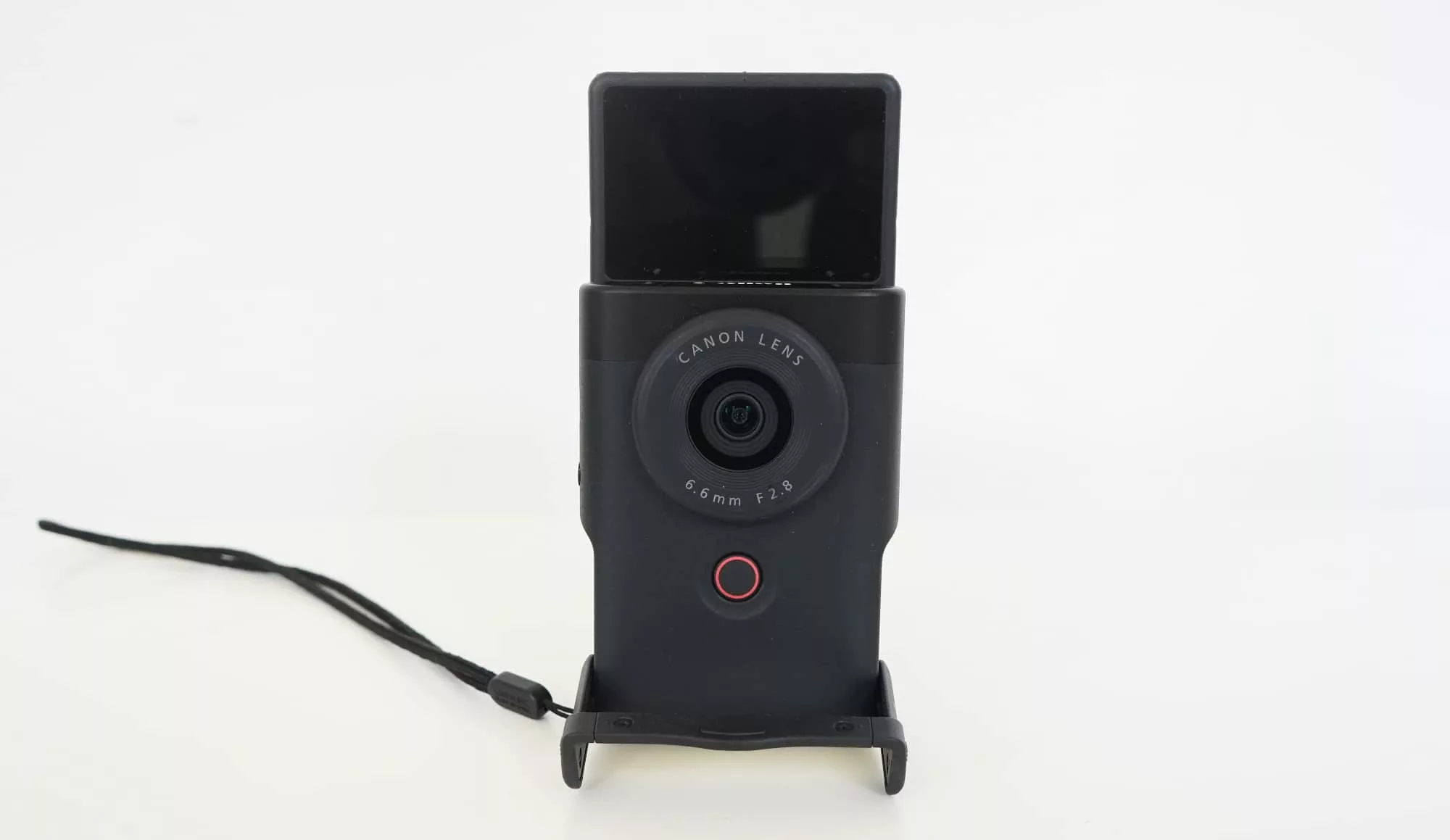
There’s one button to fire images at the front — the obvious red circle — and there’s a flip-up touchscreen you can select focus points on and change minor features like movie mode and settings, but by and large Canon’s V10 is all about firing off shots and films plain and simple.
Inside, there’s a 1-inch CMOS sensor capable of images of up to 20 megapixels and videos at either Full HD or 4K and a 6.6mm lens that’s roughly equivalent to a 35mm lens in real world 35mm terms. Technically, it runs at 18mm for stills and 19mm for videos, but in 35mm camera terms — which is how much of us evaluate focal lengths on phones and cameras — it’s equivalent to a standard walk around 35mm camera, with an F2.8 aperture.
You’ll find support for Bluetooth and WiFi to control the camera remotely and transfer videos, and there’s also a stereo microphone included in the design, as well. But that is largely it.
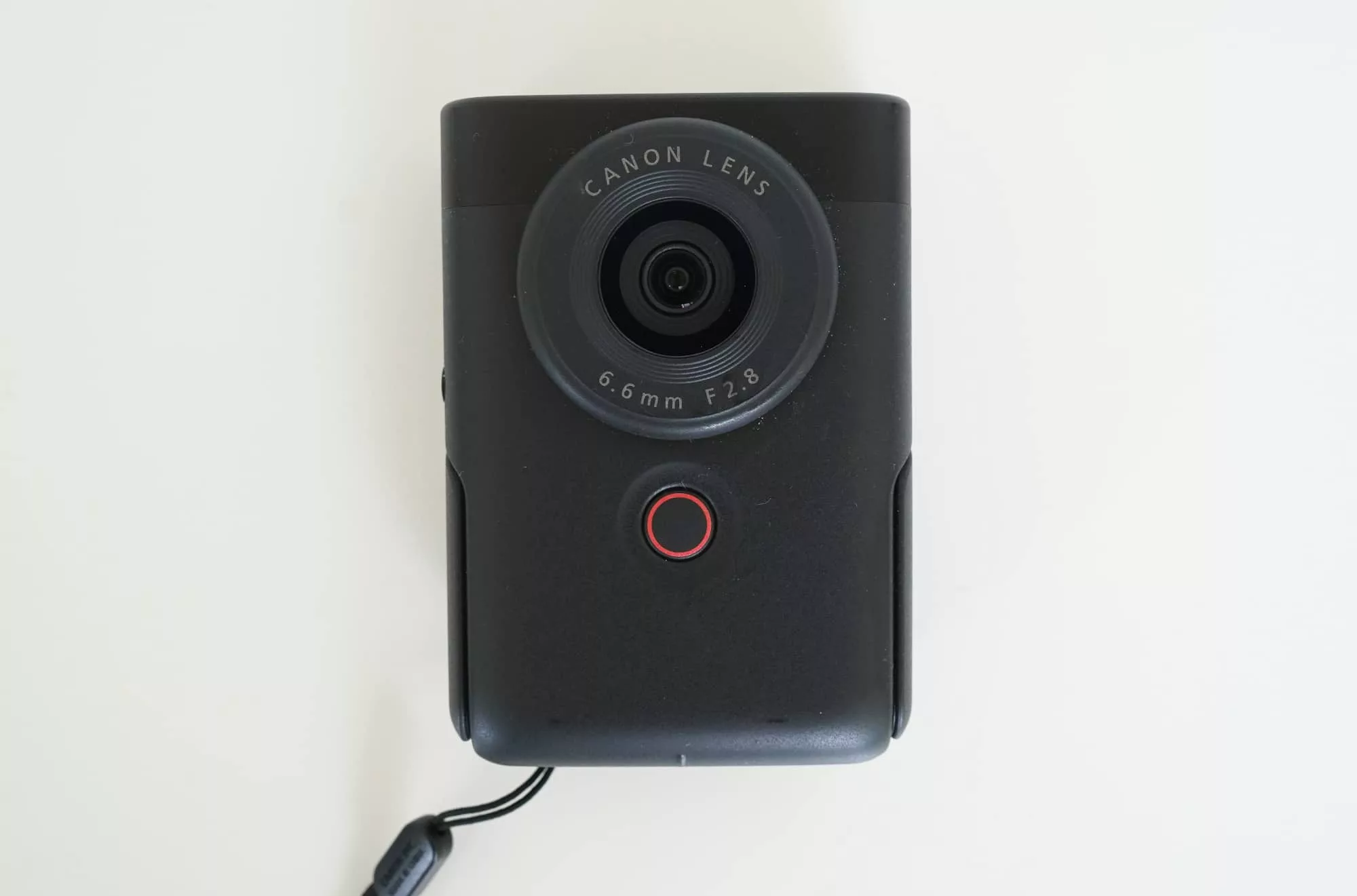
There’s no zoom, no macro, no optical image stabilisation, and for all intents and purposes, the PowerShot V10 is a really simple camera made for people who just want that. These sorts of things don’t typically exist from big brands anymore, thanks in part to how phones have eroded that space and taken over.
So Canon has changed things up with the design, which affects how you use the camera.
In-use and ergonomics
Canon has cleverly integrated a stand in the design, allowing you to set up the V10 so that it can stand up by itself, often aimed at you for selfies and videos, and there’s an app to let you connect your phone or tablet, too.
But you can also hold the camera with one hand and take pictures or video all too easily, even if the button placement is a little unorthodox, thanks to it being found at the front.
Keep in mind, the PowerShot V10 isn’t meant to be a conventional camera by any stretch of the imagination. It’s a camera made for the social crowd who mightn’t want to use their phone.
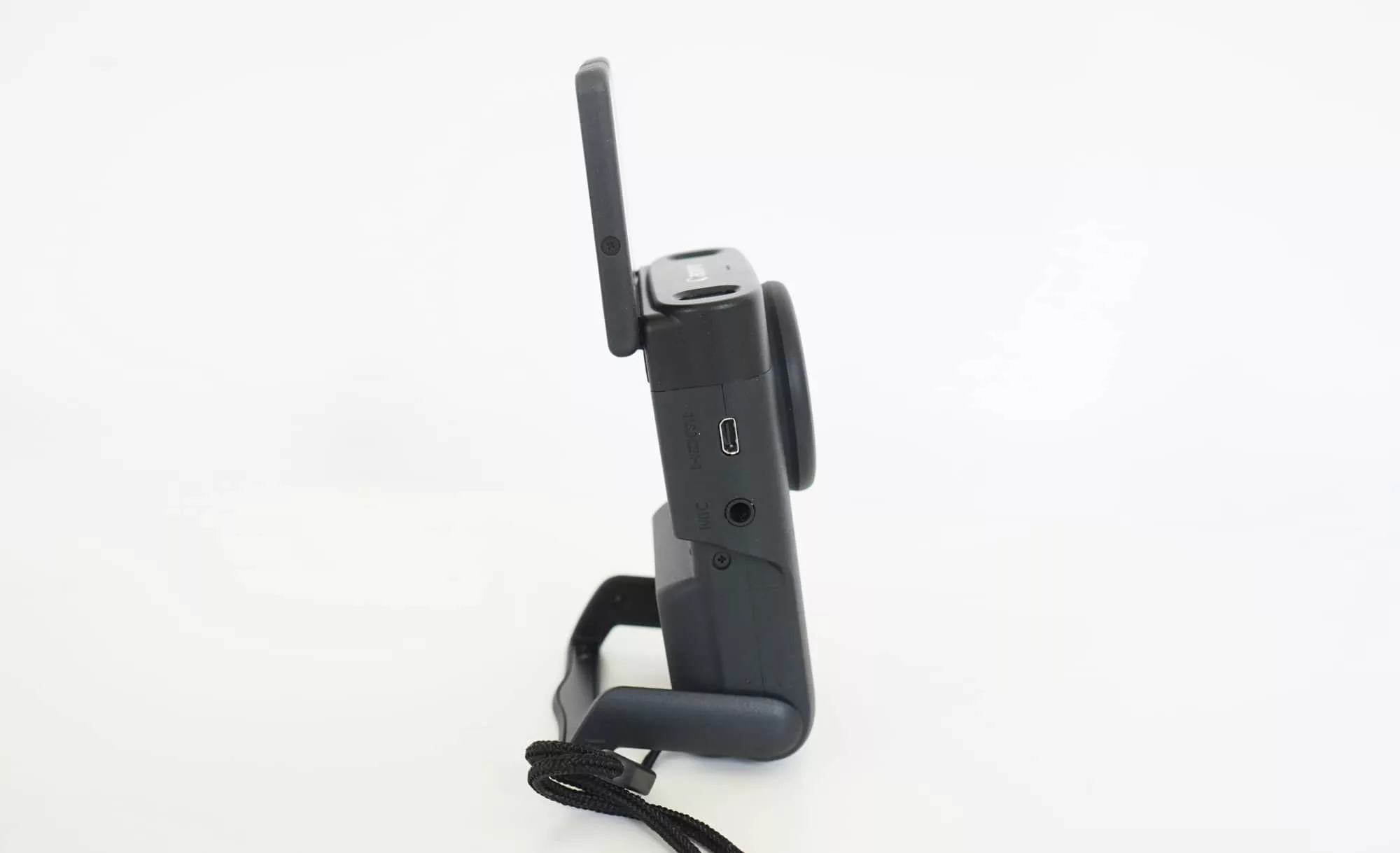
It’s a camera with a stand built in, and you can grip it like a phone and quickly thumb the button in selfie mode, or use your forefinger if you’re using it like a regular camera.
Mind you, it does feel like selfies in image and video are the point, because the camera quality isn’t amazing. There’s no zoom and the lens is fixed, giving you a wide look at yourself and either held or sitting by itself.
Image performance
Capturing those image, the PowerShot V10 delivers reasonable colour and contrast for its 15 to roughly 20 megapixels, though we can’t help the feeling that everything is a little soft. Just that little bit.
Moving subjects aren’t always the best to have, clearly, but even when still, image quality looks that little bit soft in our tests, and the camera clearly responds better when there’s an abundance of available light compared to a slight reduction in it.





We’re not head over heels in love with what we’re seeing from this camera, and the results won’t bowl you over for sure.
About the only positive thing we can find is that the PowerShot V10 makes taking images a breeze, as you simple don’t need to think about it. You just aim the screen, aim the camera, and press the button. It’s as easy as easy gets.
Video performance
You won’t have to think about taking videos, either, though the performance of those videos ranges from acceptable to clearly needing work.
Much like the image issue of not always getting focus, so too does the video performance of the 4K V10 have the occasional problem. Specifically, if you’re far enough away, you may find the video achieves focus easily, but if you buy this camera for your kids, expect Mr. Blurrycam to rear his annoying head, because too close and the video can be markedly soft.
Outside of a distance issue, the video quality is acceptable, but doesn’t seem too far from what any reasonably priced phone can do, either.

Yes, you’ll find 4K video on offer in the PowerShot V10, and it’s nice outdoors in crisp daylight, but lower that light any when you’re indoors, and the noise starts to rear its head.
At least you’ll get a decent microphone system to record on, which makes the V10 more interesting than most phones. A two channel stereo microphone built into the hardware is handy, and the included noise reduction is a bit of a bonus at times, as well. Plus Canon includes a 3.5mm headset jack for an external microphone if you want to upgrade things with a proper video mic.

Battery
There’s also a USB-C port for charging the camera up, handy because the 1250mAh battery life ranges from a few hundred shots to just under an hour of video.
It’s also not removable and only charges over Type C, taking over an hour to do so. According to Canon, you’ll get approximately 500 recharge cycles of the PowerShot V10 camera, meaning roughly 500 charges until the whole thing starts to struggle and you’ll need to replace the camera. That’s one of those features we don’t like, because cameras are meant to be used for a long time, and removable batteries help them get past short lives.
Value
As much as that bothers us, the price is the thing that really stumps us. On the one hand, the sub-$700 cost is fairly effective given the V10 is a 4K camera.
Yet on the other, the PowerShot V10 also feels so basic that we’re not entirely sure that the camera is worth it, simply because a phone upgrade may also be a better deal, as well. As it is, at the time of publishing, Canon had dropped the price from $699 to $499, and we’re still not sure that’s great value, either. It’s better, sure, but great? Hardly.
To Canon’s credit, there’s a decent amount for a compact camera to consider: simple design, stand included, 20 megapixel camera, 4K video, larger sensor than most phones, stereo mics, several filters, flip up vari-angle screen. The package isn’t bad.
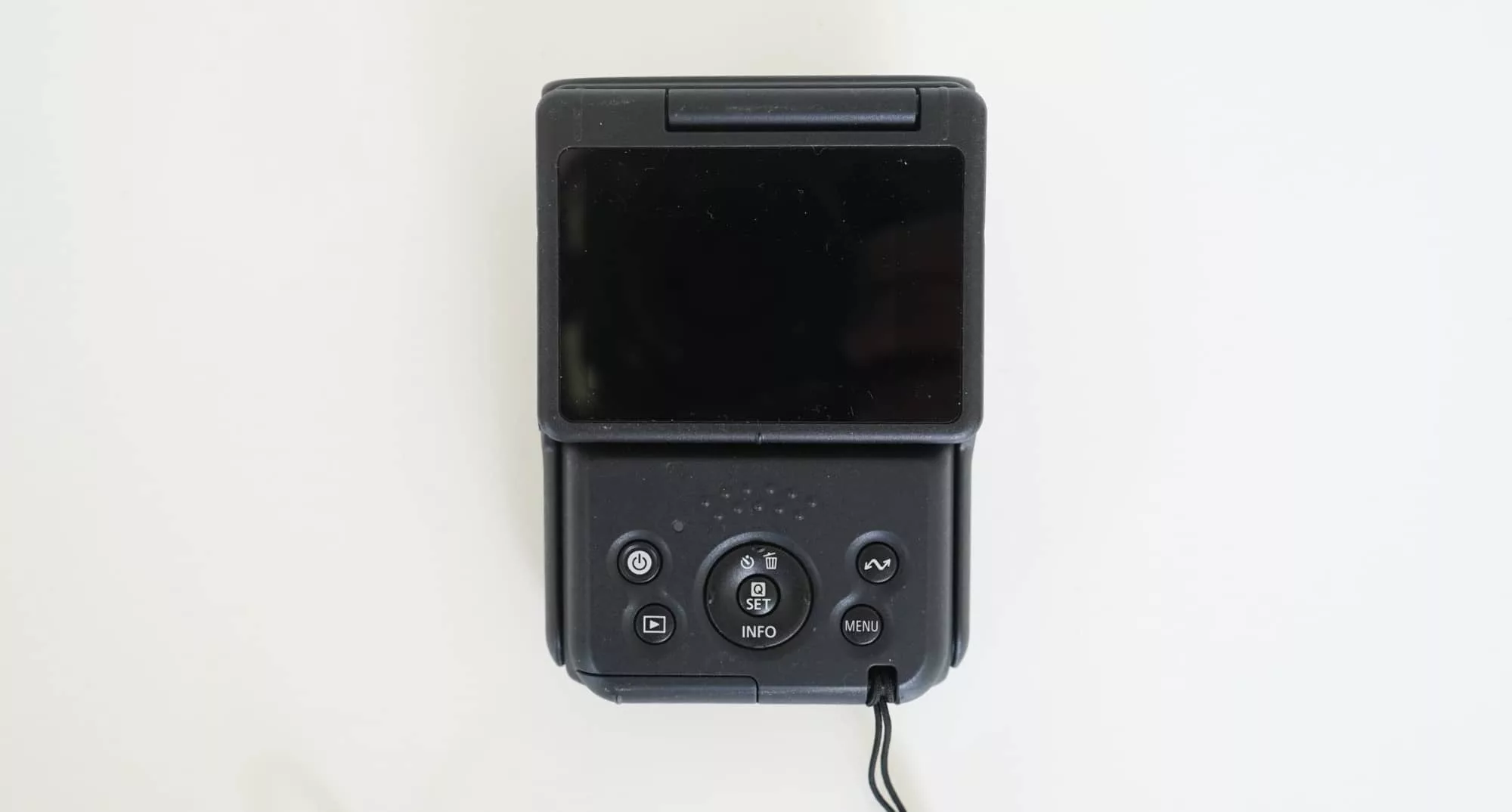
And yet on the other hand, even phones in the mid-range spot are getting some of these features, and they capture directly to social media without the need for an intermediary.
About the one thing that makes the PowerShot V10 stand out is its inbuilt stand, which is a handy inclusion that you might have to pay $50 to add as an accessory to any other phone.
What we’re trying to say is that while the value for the PowerShot V10 isn’t bad, new phones may strike that value argument even better, and that makes the camera difficult to argue for.
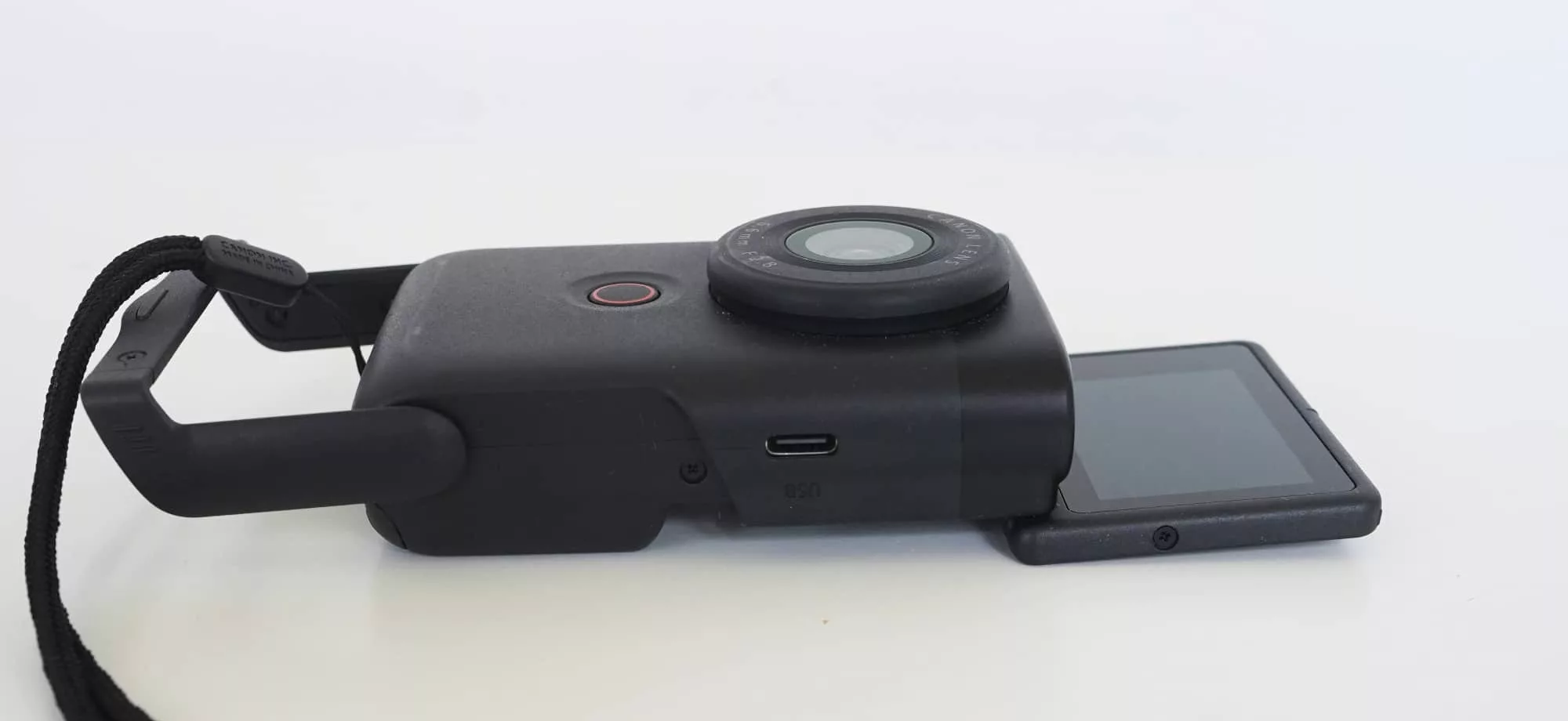
What needs work?
Its simplicity is therefore a problem, and a pretty sizeable one for a camera of such small stature. Anyone can use it, sure, that’s neat, but anyone can also use a phone, and there are plenty of accessories to help those stand up by themselves.
Canon’s design clearly focuses the V10 on the social market, because it can do the selfie trick all too easily, either for videos where you talk at the camera, or even ones where you don’t and demonstrate. And it can do selfie pictures rather nicely.
But use it as a regular camera? That’s not as solid a use for the camera, as it struggles to do much with its basic equivalent to a 35mm lens. You can’t get super close with macros, and it won’t let you get much from far away, either. Shorter arms will struggle to get focus, and there’s no optical image stabilisation, either.
The PowerShot V10 is a single use camera, and that limits its uses incredibly. You would be better off buying a more capable compact if you wanted a compact, and then that $50 desktop tripod accessory, simply because it would give you more options. Alternatively, buy a better phone.
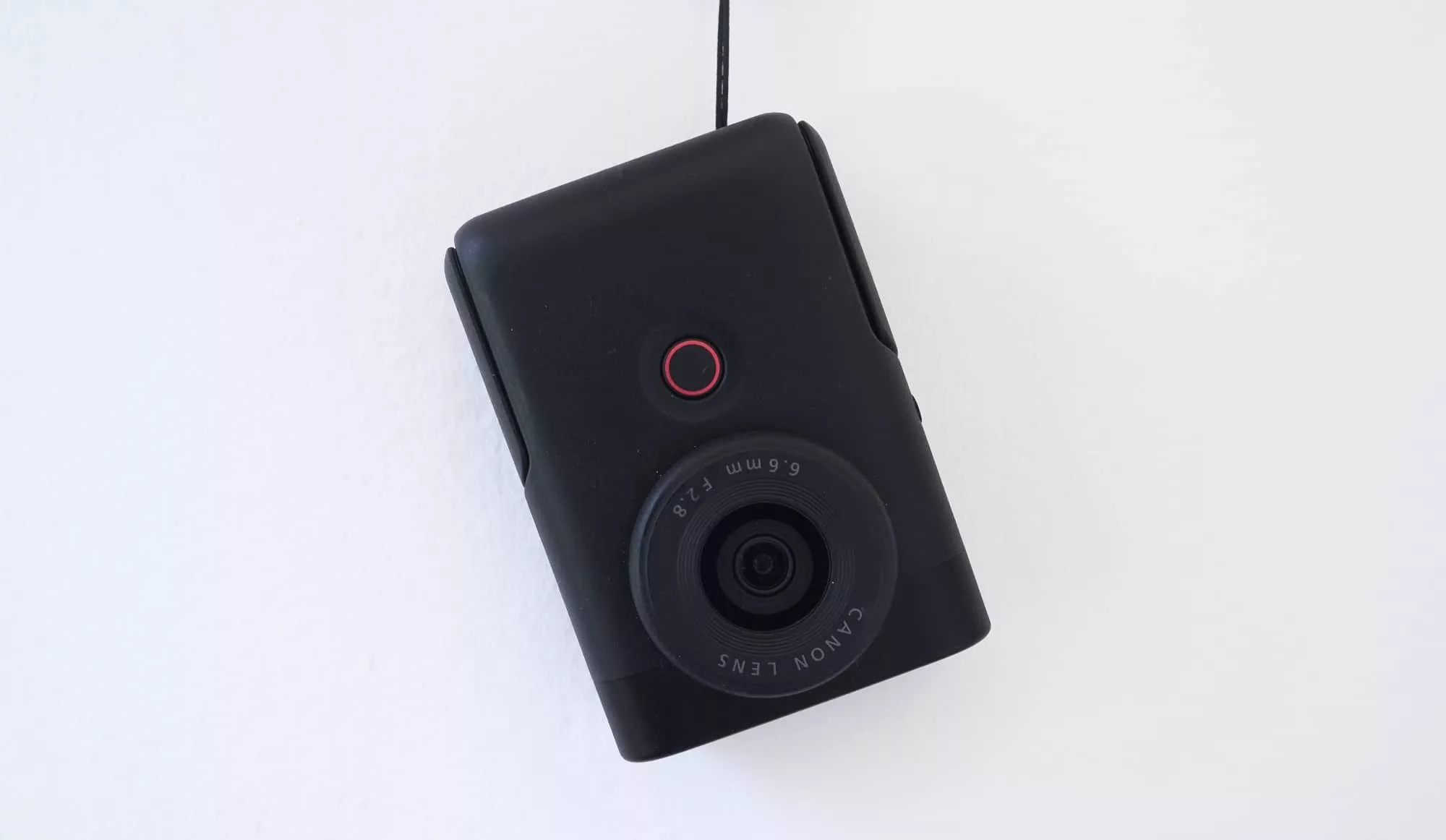
Final thoughts (TLDR)
Canon’s jump into the social camera world is interesting, but ultimately feels like a bit of a weird landing. So many phones can do what Canon is trying to achieve here, and many do it better with more features, to boot.
To Canon’s credit, the design is really quite clever and it provides an easy way to jump into recording yourself with no messing about. Still, we can’t help feel the whole thing works.
It feels very much like a PowerShot V20 would help Canon iron out the quirks in what is ultimately a curious camera competing for space dominated by phones, but it’s quirkiness could just guarantee this phone to one generation. It’s that unusual, and another unconventional compact from Canon, much like the PowerShot Pick was.
The PowerShot V10 is about keeping it simple, and that will be a good thing for some people. We just think a little more complexity would have helped the camera go farther.







